Ready to lead
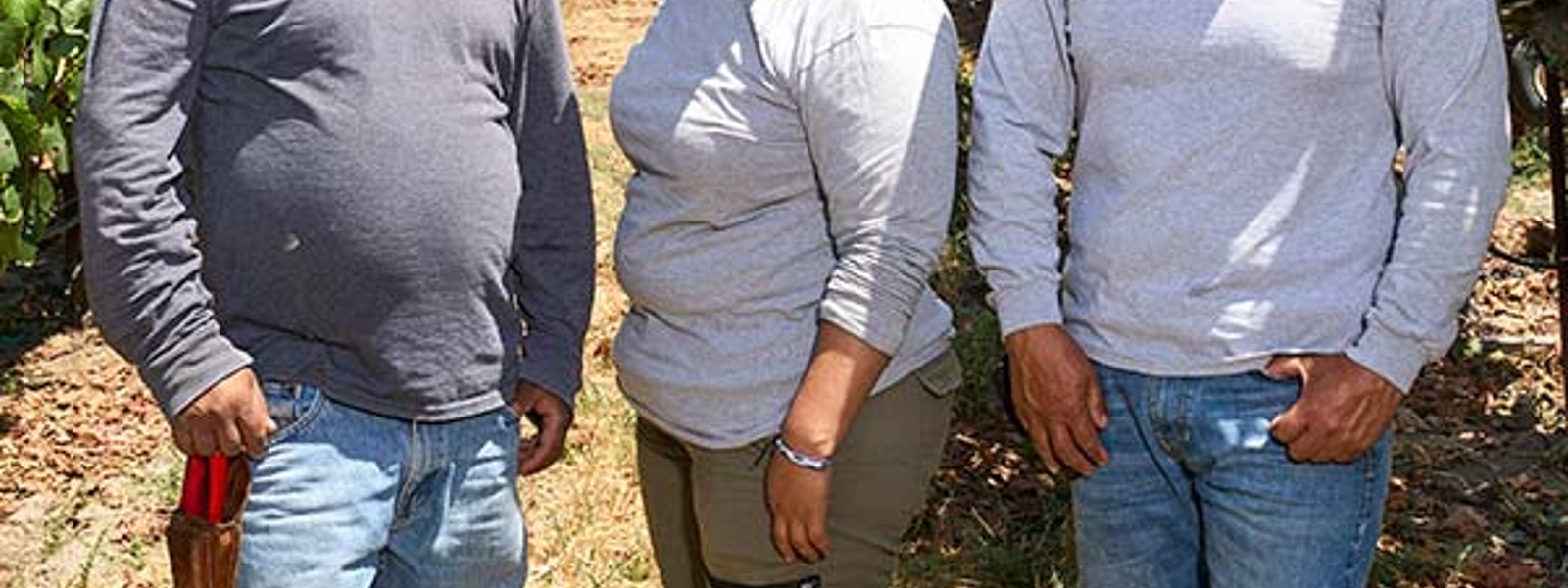
January/February 2024 California Bountiful magazine
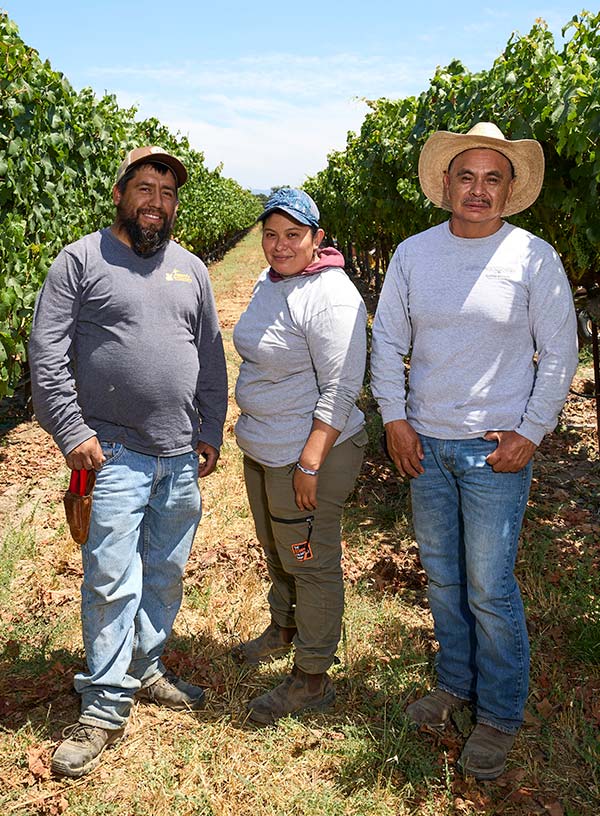
Vineyard workers take on new roles in Sonoma County
Story by Caleb Hampton
Farm photos by Fred Greaves
Washington, D.C., photos by Michelle Dondero/Sonoma County Winegrowers
Growing up in the Mexican state of Oaxaca, José Martínez worked the cornfields with his family. But, he says, “there wasn’t really much work.”
After marrying, Martínez and his wife came to California. He found jobs in construction yet struggled to afford more than a single room for his growing family.
In 2010, Martínez got a job pruning grapevines at Dutton Ranch, a vineyard in Sonoma County, which soon became home. Unlike in most employment sectors, the job included accommodation in the ranch’s employee housing. He and his family have lived there ever since.
“I like working in the vineyards,” he says, “especially harvesting the crop after all the work we do to take care of the vines, from planting to pruning and everything else.”
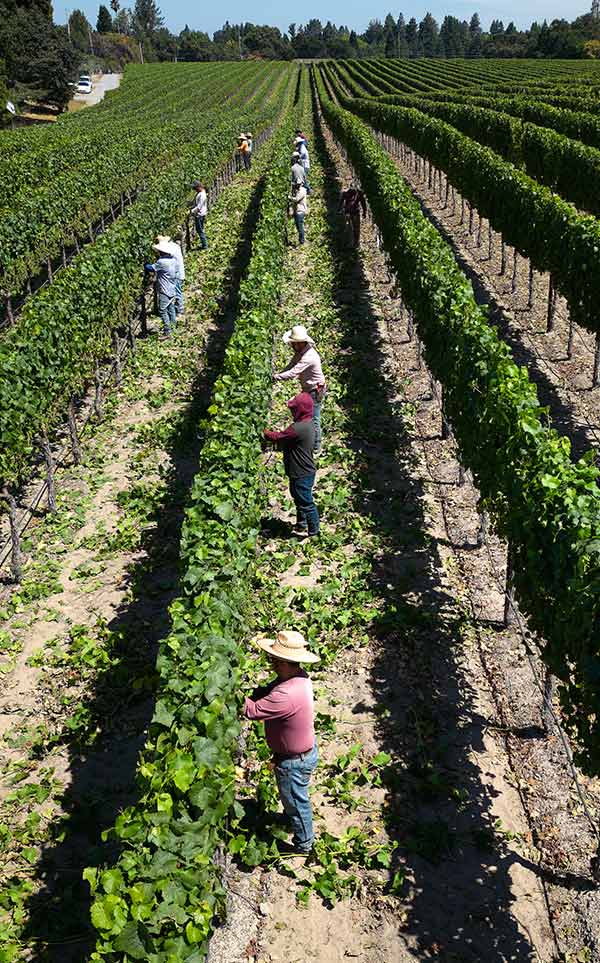
Skilled workers
Martínez’s dedication earned him promotions. He now works as a crew supervisor. In the weeks leading up to last year’s harvest, he moved along rows of vines, coaching a group of two dozen workers as they pulled leaves to expose the grapes to sunlight.
“It’s a skilled job,” says Steve Dutton, owner of Dutton Ranch. “You have to understand the form of the grapevine, how you want its structure to be, pruning, suckering, leaf-pulling, all kinds of things.”
Experienced vineyard workers such as Martínez enable Sonoma County to produce some of the world’s best cabernets, chardonnays and pinot noirs, which annually fetch around $8 billion in sales.
The county’s wine sector also powers the local economy. About a quarter of all jobs in Sonoma County are in the winemaking and grape-growing sectors, bringing in more than $3 billion annually in wages, according to Sonoma County Vintners. Wine tourism generates an additional $1.2 billion each year.
“It’s very obvious to those of us who know the industry, who have been in this area for a long time, that the farmworkers are an incredibly important part—probably the most important part—of this equation,” says Rep. Mike Thompson, D-St. Helena, who represents the region in Congress and started the Congressional Wine Caucus.
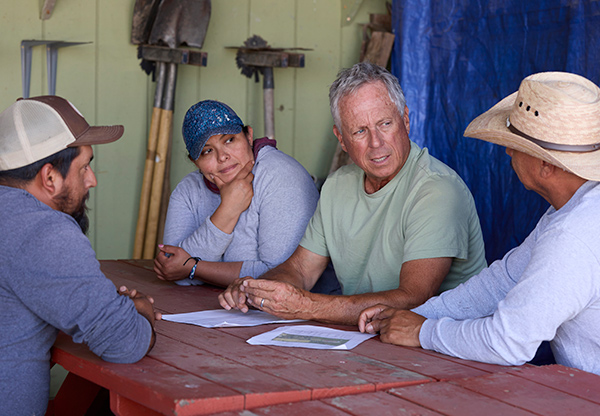
New opportunities
In 2022, to honor the workers and provide new opportunities, the Sonoma County Winegrowers founded the Fundación de la Voz de los Viñedos, or Voice of the Vineyards, a leadership academy for Sonoma County vineyard workers.
The program is designed to give a cohort of employees leadership skills to become crew leaders as well as opportunities to participate in parts of the business beyond caring for the vines and harvesting grapes.
“The academy is exposing the crew that does all the work in the field to more of the leadership and business aspects of running a company,” says Jim Pratt, owner of Cornerstone Certified Vineyard, who helped develop the academy.
Those aspects include human relations, finance, client communications and regulatory compliance. “A lot of it is learning how to deal with winemakers and with the government,” Pratt says.
The first leadership academy class included 15 workers. Last year, the program expanded to 20 participants, including three women, on par with the estimated 15% of California vineyard workers who are women.
“When I started working in agriculture, there weren’t many opportunities for women,” says Anelly Reyes Jiménez, a 2022 academy participant and crew leader at Cornerstone. “Over the years, we started to see a little more support and more opportunities.”

Leading on and off the farm
The leadership academy holds half-day sessions once or twice per month for which participants get paid time off to attend. So far, it has included workshops on financial literacy, conflict resolution, communications, disaster preparedness, winemaking and other skills.
“All these guys work out on the farm growing the winegrapes, but not many of them get opportunities to go to a winery and see the process once the grapes have been picked,” says Dutton, who serves on the Sonoma County Farm Bureau board of directors.
In the financial literacy workshop, “they got to hear about everything from filling out a rental application to starting a bank account, doing a child savings account, buying a car and sending money safely to Mexico,” says Karissa Kruse, CEO of Sonoma County Winegrowers, who is married to Dutton.
“I learned a lot,” says José Ventura Vieyra García, a crew leader at Cornerstone Certified Vineyard. “They taught us about how to be leaders not just at work but also in the community and in our households.”
Like many California vineyard workers, most or all of the academy participants migrated to the U.S. from Mexico, often with limited English and more years of farming experience than formal education. Vieyra García came to the U.S. six years ago from the Mexican state of Michoacán, where his family worked cultivating sorghum, wheat, chickpeas and other crops.
Growers say employees such as Vieyra García have the skills to play more roles in vineyard management than many have in the past. “Anyone who runs a household knows about balancing a budget,” Pratt says. To apply their skills in a business context, he says, they just need training and opportunities.
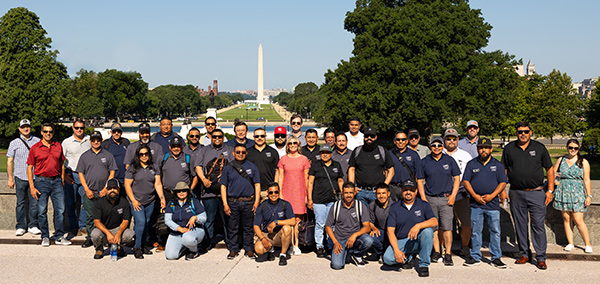
The future of California wine
Participation in the leadership academy is paying off for workers as well as their employers. “The growers were really excited to be able to provide those opportunities and saw value in having more employees in their operation have those types of skills,” Kruse says.
She says she hopes the program will help vineyard workers become a more visible part of the wine world. “We’re encouraging them to be a bigger voice in terms of representing our wine community and our ag community,” she says.
In addition to rewarding the workers’ labor and expertise, there is optimism that programs such as the leadership academy may benefit the wine sector as a whole.
“In the wine industry, consumption is flattening out and younger multicultural consumers are not necessarily adopting wine as much as we saw in the past,” says Liz Thach, professor of wine and wine management at Sonoma State University. “By having people in leadership positions who are Mexican American, that’s only going to help. The future of the industry lies in having a highly skilled workforce with leadership skills and a diverse group of consumers.”

Making their voices heard
The leadership academy participants have already made their voices heard in some high-profile venues. In July, through a partnership with Alaska Airlines, Sonoma County Winegrowers flew the entire academy to Washington, D.C.
The workers, along with Dutton, Pratt and other growers, visited monuments, toured the Capitol and met with the Congressional Wine Caucus and other members of Congress, who sipped wines made from their grapes.
“It was unforgettable,” says Luis Guillermo Velasquez, a crew leader at Dutton Ranch.
José Cervantes, operations supervisor at Cornerstone, has worked in vineyards for more than three decades. “I come from a small town in Michoacán,” he says. “I never imagined being somewhere like that.”
In the future, the growers plan to continue the academy, with new classes each year. Meanwhile, academy graduates are looking to use the skills they have learned to benefit a new generation of vineyard workers.
“In many aspects of agriculture, you can never finish learning,” Vieyra García says. “I want to keep learning and teaching newcomers.”
Editor’s note: Some quotes in this story were translated from Spanish.
More than winegrapes: A glimpse at agriculture in Sonoma County
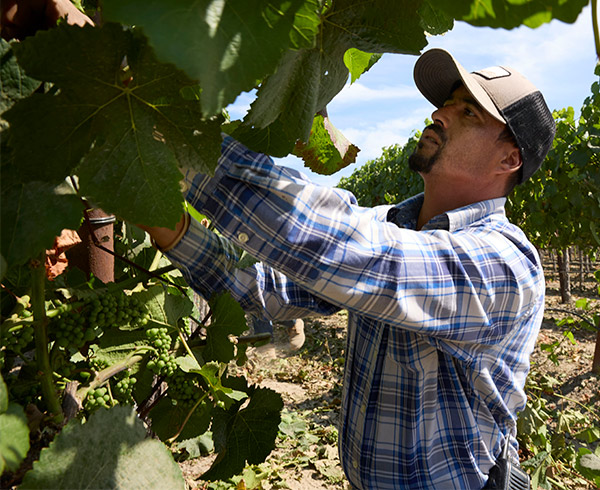
Sonoma County wines are known throughout the world. The county’s temperate climate, with cool nights and warm days tempered by ocean fog that drifts across the vineyards from the Pacific Coast, creates ideal growing conditions for more than 60 varieties of winegrapes.
But winegrapes aren’t the only agricultural commodity Sonoma County produces. According to the most recent county crop report, Sonoma County dairies generated more than $120 million in 2021. Cheese lovers will be interested to note that the California Cheese Trail, which winds through Sonoma County’s canyons, pastures and oak-covered hills, links nearly 30 farms and creameries.
The county is also famous for its Gravenstein apples. The fruit was widely planted in Sonoma County in the 1800s. Local farmers, including the Dutton family, continue to grow it. Ripening in late July and celebrated each August at the Gravenstein Apple Fair in Sebastopol, Gravs are some of North America’s first apples to hit the market each year.
Sonoma County’s other top agricultural commodities include poultry, beef cattle, vegetables, cut flowers and hay crops.

